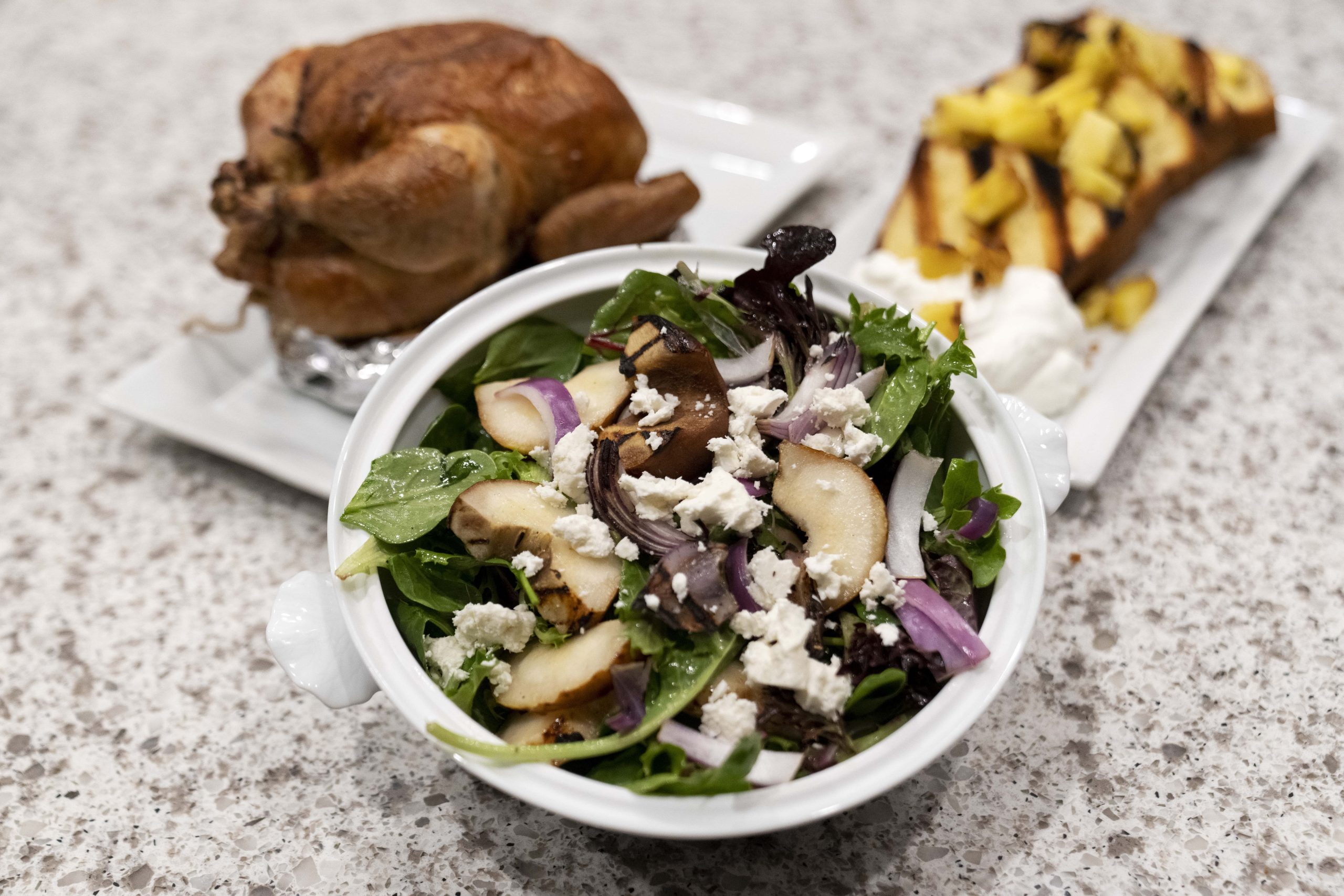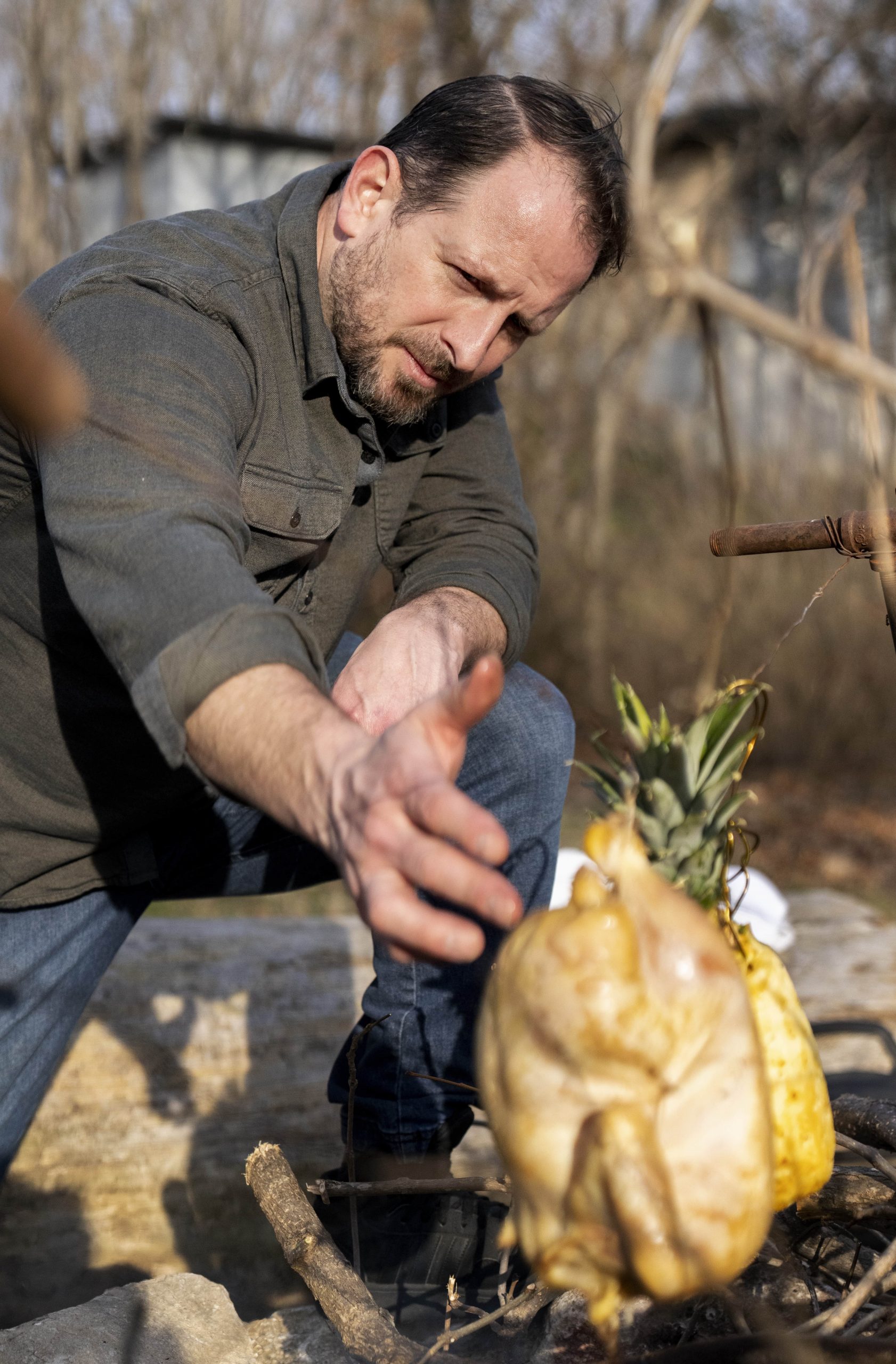Photos by L.G. Patterson
Sometimes you need more variety than what’s offered by cooking on the four-burner range in your kitchen. With the arrival of warmer weather, it’s finally appropriate to cook outside and you can use a fire pit or barbecue to liven up your cooking experience.
No matter the menu, you just have to think a little outside the four-burner box. Although it may require some additional skills and push you out of your comfort zone, the excitement of cooking over an open flame can be worth the effort and you will see improvement with each experience.
FIREWOOD
Firewood is an essential element of outdoor cooking, but it’s important to use the right kind. Hardwoods such as fruit and nut trees (apple, cherry, pecan, etc.), as well as hickory, oak and mesquite are the most common and safe to cook with. Some less common ones you may encounter that also are safe are mulberry, lilac, ash, birch or alder.
Avoid softwoods like pine, cedar, fir, spruce, redwood, sycamore and elm. These typically have an unpleasant flavor from the sap as they burn and can even be toxic. Also, avoid leftover lumber scraps as it is hard to tell what type of wood it is and how it has been stored, painted, stained or treated (whether pressure treated or using other chemicals).
PAN
If you have a cast iron pan, you can cook over logs. You can easily rest your cast iron pan on some smoldering logs and cook just about anything you want. This imparts a little smoke or a heavier char. You may need to wait until the logs cook down to coals for cooking over a lower heat, but you can sear a steak in minutes with heavily burning logs.
FLAME
Creating a non-flammable makeshift tripod or structure to span over your whole fire pit is essential for safety. Making either a tripod or hanging structure from a tree is easy to do with baling wire (the same wire used to make hay bales) because it is strong, flexible and can be found at almost any hardware store. It is best to rub the wire with a little oil and then you can create loops, truss your items or use it to make your hanging structure.
In a pinch, a coat hanger can be used to secure your item. Just about anything can be roasted in this manner; a chicken can take one to two hours, while a steak might be done in half that time. Attach the wire in a way that you can raise and lower the item that’s cooking to give yourself more control.
Season or marinate your meats with ample time for the seasoning to penetrate the center. Chickens may take 12 to 24 hours to season, while smaller items may only take a few hours. Items like pineapples and other fruit may not need any seasoning, but other preparation such as removing thick skins or scoring may be necessary.
GRILL
You can swipe your grate from the barbecue grill or buy one for your firepit. Depending on what you’re cooking, you may want logs that are at a raging burn (like for searing a steak), or you may want to wait until the logs have burned down to coals (for a slow char of fruit or vegetables, or cooking a chicken breast).
As you cook, you will notice hotter and cooler parts of your grill. You can move and adjust the items as needed to get the job done. Once finished, don’t forget to brush your grate and oil before returning it to its proper storage place.
SAFETY
Remember, safety comes first. Clear the area around the fire, getting rid of items that may ignite, such as brush or combustible material.
When you are done cooking, if the fire is still hot or it is still on fire, you may need to use water to fully extinguish it. Have a fire extinguisher handy, as well as a thermometer, as it is easy to be rushed and not adequately cook your food.
PROPER FOOD TEMPERATURES TO REMEMBER:
Chicken: 165 degrees
Ground meats: 155 degrees
Whole meats: 145 degrees (pork, lamb, fish or beef, which also can be cooked to desired temperature if deliberately undercooking)

GRILLED POUND CAKE: This works best cooked on a grill over wood but would also work great with a small amount of fat in a pan. It is great served with other components as dessert. Cooking over the fire will give it a great crust as a texture contrast to the outside and bring out more of the flavor.
ROASTED CHICKEN: This may be one of the longer items to cook but it is worth the wait. The long cook time allows for the skin to render and crisp nicely, while also having a nice even cook that prevents it from drying out. Once the chicken has reached 165 degrees (check in the thickest part of the thigh and breast), rest for about 10 minutes and carve.
CHARRED RED ONION: Cut the top and bottom of an onion before cutting it in half and put it directly into a dry pan or onto the grill over medium heat. You can set it on the grill and forget about it for a bit. Let more color develop than you are comfortable with. Once you remove the onion and slice, the inside has a gorgeous contrast of texture. It’s great to use in a salad or as a vegetable side dish. Season with a bit of oil, salt and pepper, and you are good to go.
CHARRED PEAR: This has a similar process as the red onion. Cut it in half and core (you only have to worry about the stem at the top and the core at the base). Place it on the fire and char. The inside will be creamy while the outside will have a bitter and crisp texture. Another item that’s great in a salad or as a component in a dessert.
CHARRED LETTUCE: I know this one seems a bit strange, but high heat and a short amount of time can create some wonderful flavors on the grill. Cut the lettuce in half or quarters (a wedge salad with charred lettuce is amazing). Drizzle with a little oil, salt and pepper. Place directly onto the grill on the fire. Cook for two to three minutes until a char forms and the lettuce starts to wilt, then rotate to the other cut side. Remove, cool and use for a wedge salad or cut up and use in a tossed salad.



